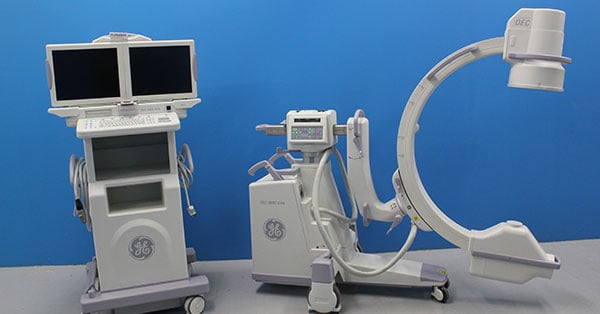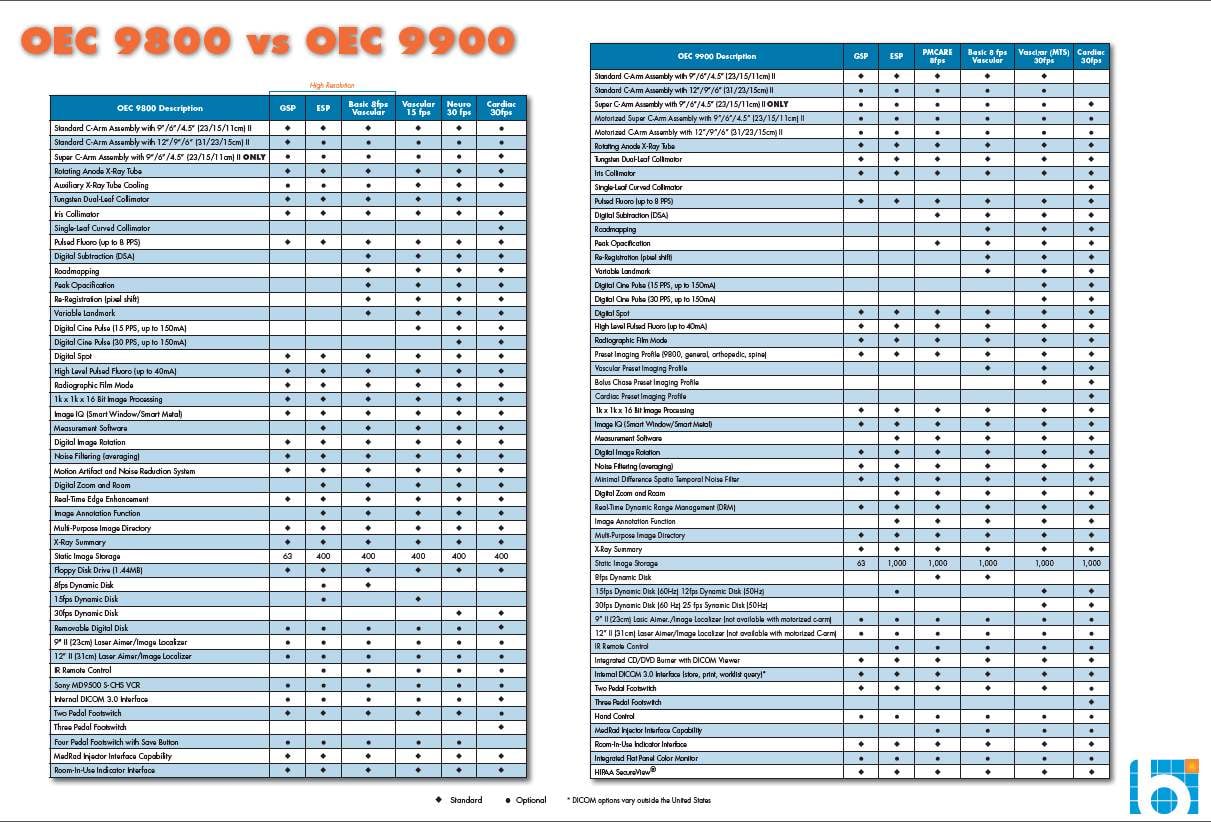
OEC lists 51 items (assuming you consolidate the image preset options –more on that later) describing the OEC 9900 C-arm in their technical data brochure. That's a lot of features with, potentially, a lot of chances to show you that the 9900 is a better machine than the OEC 9800. However, on the more pragmatic side of things, the OEC 9800 is more common, more affordable, and well-proven as a workhorse in its own right. So, how do these two C-arms really stack up side-by-side? Take a look at the graphic below to see for yourself, or keep reading for a summary.
OEC 9800 vs. OEC 9900 C-Arms
 (click to enlarge) (click to enlarge) |
|
|
The Short Version:
Of the aforementioned 51 descriptors, 44 of them are the exact same as the 9800. For you math nerds, that is an 86.2% overlap. That being said, it’s probably faster to say what is different.
For the 9900:
-
Added HIPAA Secure View
-
Did away with the floppy drives in favor of USB/DVD
-
Added pre-set image profiles for each configuration
-
Increased the onboard static image storage dramatically
-
"Re-branded” the basic Vas 8 FPS as the PM care 8 FPS and the OEC 9800 Neurovascular 30 FPS became the OEC 9900 Vascular MTS.
The Long(er) Version:
Hardware:
-
The X-ray tube, generator, image intensifier, steering, hardware, and C-arm movements are all the same. If you’re used to the 9800, the 9900 will have a similar feel and footprint.
-
The monitors are quite different on the 9900. These systems have flatscreen monitors on an articulating boom arm. They are also a higher resolution than the monitors on the 9800, but they still process the same signal (see below). The touchscreen technology of the 9900 monitors is also improved.
-
The hard drives of the 9900 are more modern and have much larger capacity.
Imaging Chain:
- Both the 9800 and 9900 have the same 1k x 1k x 16 imaging chain.
Where the 9900 wins
-
Improvements on some of the higher-level vascular features
-
USB storage
-
Articulating flatscreen monitor displays
Where the 9800 Wins
Being that the 9800 is extremely similar to the 9900, it really only "wins" in one area: price point. Of course, this means that many of the same tasks one could perform on a 9900 (especially tasks that use the GSP or ESP software platforms) can be done on a 9800, and for a lower capital expense.
In the Long Run:
There are compelling reasons to consider both of these systems. The choice of which one is better will come down to the individual facility. But, if pressed for a recommendation either way, we might say:
-
Facilities that do a lot of vascular work could benefit from the improved software features of the OEC 9900
-
Facilities that do basic surgery or pain management can get what they need from a 9800 without buying features they won't use.
-
Facilities that would like a middle ground between more modern functionality and cost can find it through an OEC 9800 with upgraded monitors, storage space, and wireless controls.
For more information about the OEC 9900, the OEC 9800, or other C-arm models, contact us to speak to an expert or check out our C-Arm resources page.

Chris Sharrock
Chris Sharrock is the Vice President of Healthcare Solutions at Block Imaging. Each day Chris sets out to provide the best equipment, parts, and service solutions for healthcare facilities across the world. Outside of work Chris enjoys playing in a band, and spending time at the lake with his family.






